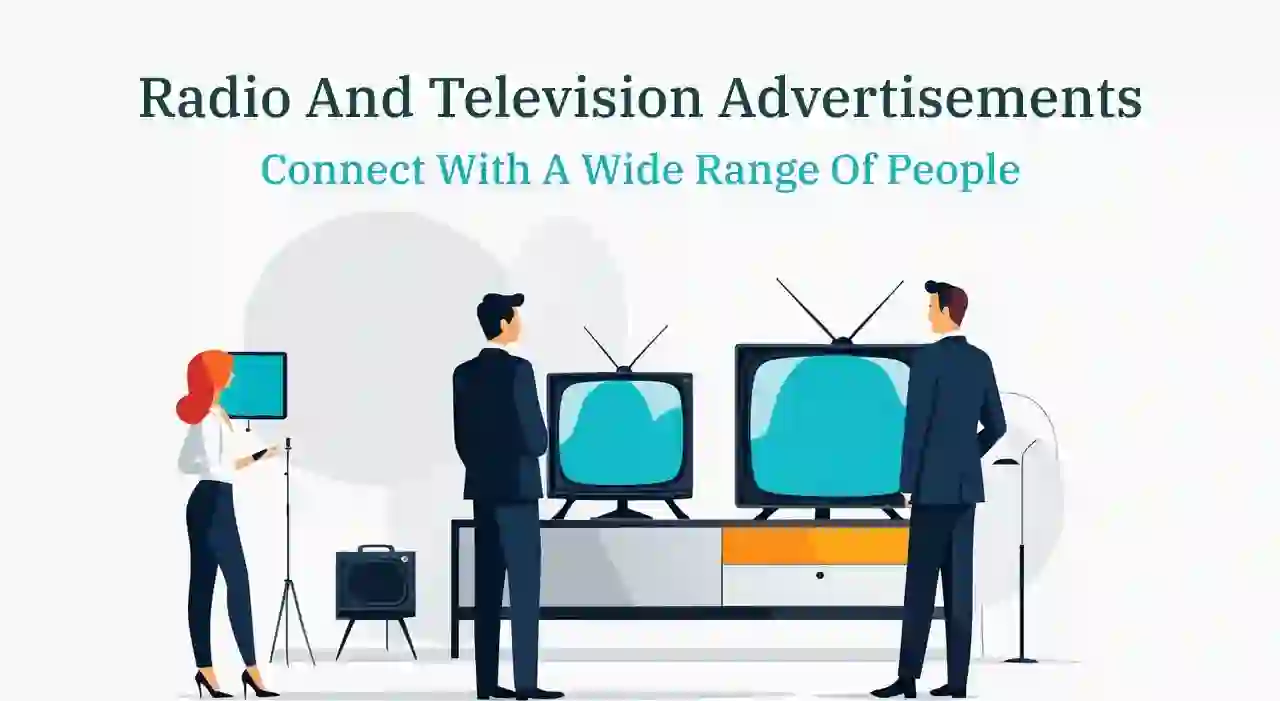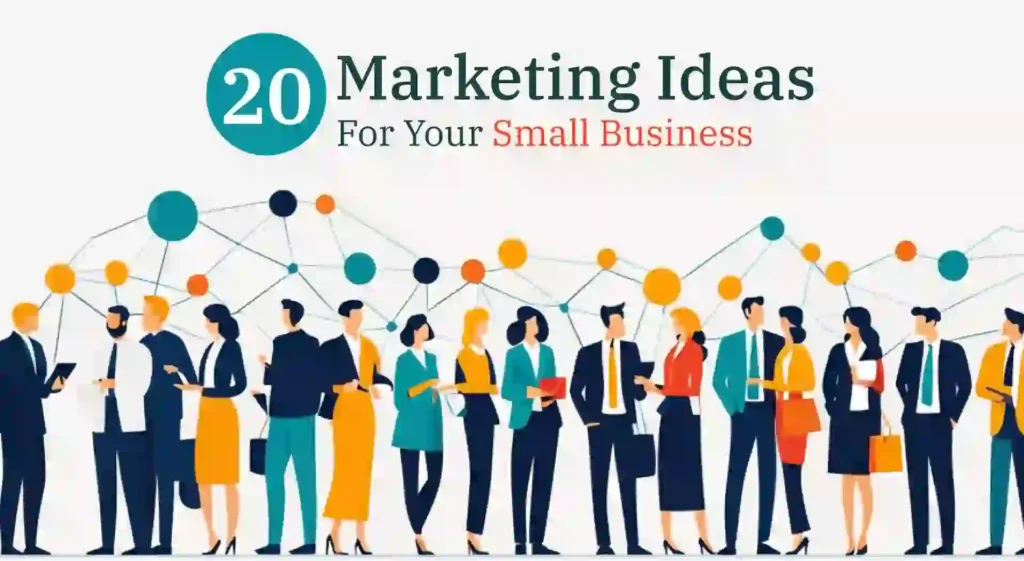Have you ever received a colorful flyer in your mailbox advertising a local event? Or perhaps you’ve seen a catchy billboard while riding in the car with your family?
These are just a couple of examples of offline marketing, also known as traditional marketing, which has been around for decades.
Despite the rise of digital marketing in today’s technology-driven world, offline marketing is far from dead. Actually, it is making a comeback and gaining popularity once again.
Businesses are still investing billions of dollars into offline advertising every year, showing that it is still a valuable investment.
This simply refers to the traditional methods of promoting products or services that don’t involve the internet.
Think brochures, flyers, radio ads, and even good old-fashioned direct mail. These methods have been tried and tested over the years and have proven to be incredibly effective in reaching audiences of all ages.
Now, you might be wondering, why bother with offline marketing when we live in a world dominated by smartphones and social media? Well, that’s exactly what we’re here to explore.
Despite the convenience and reach of online advertising, it offers unique advantages that can’t be replicated in the digital space.
This article explores offline advertising, showcasing various examples and explaining why it remains important and effective.
We will take a closer look at some of the traditional offline marketing strategies and additionally explore new and creative strategies that businesses are using to differentiate themselves in modern day competitive marketplace.
Table of Contents
What is Offline Marketing?
Offline marketing is similar to the traditional advertising methods used before the internet became dominant. It focuses on building connections without the use of digital tools.
Imagine stepping back in time when people relied on things like TV and radio commercials to catch your attention. Picture the excitement of receiving real mail in your mailbox—letters, flyers, and brochures that you can hold in your hands.
Think about those glossy magazines filled with colorful ads that you flip through while waiting at the doctor’s office. It also includes those huge billboards you see on the side of the road, capturing your gaze as you drive by.
But it’s not just about static advertisements. It is also about being present where the action is.
Suppose there are lively trade shows and events where companies are displaying their products. You could leave with giveaways such as pens, shirts, or bags with logos on them.
Don’t underestimate the impact of a simple chat. This involves striking up conversations, whether it’s with a salesperson at a store or chatting with someone at a networking event.
In essence, offline marketing is about creating tangible experiences and building personal connections with customers, all without relying on the digital world.
It’s about tapping into that human touch that makes advertising feel real and memorable.
Scope of Offline Marketing
Offline marketing is incredibly expansive and varied, covering a multitude of strategies and approaches that businesses employ to engage their target audience without depending on the internet.
From old-school print ads to face-to-face events, offline marketing provides countless opportunities for brands to establish genuine connections with customers.
Print advertising is a key element of offline marketing. It involves putting ads in newspapers, magazines, and brochures, as well as handing out flyers and leaflets in local neighborhoods.
By using print advertising, businesses can reach a large number of people and effectively target specific demographics or areas.
Broadcast advertising is an essential component of offline marketing. It encompasses television and radio commercials, both of which have been widely used in advertising campaigns.
Television commercials have been a traditional method for businesses to present their products or services to a wide audience during popular TV shows.
Likewise, radio commercials provide a means to connect with consumers while they are on the move, whether they are commuting to work or completing daily tasks.
This form of advertising proves highly effective in enhancing brand visibility, especially in bustling areas with heavy footfall or during noteworthy occasions.
Related Article: Social Media Marketing Strategies
In general, offline advertising and marketing features a huge variety of techniques, providing companies with several possibilities to have interaction with customers in the real world.
By combining print ads, broadcast marketing, outdoor ads, and in-person events, brands can create strong connections and cultivate long-lasting relationships with their desired audience.
Exploring Traditional Offline Marketing Methods
1. Brochures and magazines
Brochures and magazines play a crucial role in offline marketing, effectively engaging audiences through their physical and visually appealing format.

Brochures, with their compact yet informative nature, act as portable advertisements that potential customers can carry around, leaving a lasting impression of your brand’s products or services.
With clever design and compelling content, brochures skillfully convey important messages and highlight the unique selling points of your brand.
On the other hand, magazines offer a vast canvas for storytelling and brand promotion. Advertising in magazines allows businesses to tap into specific interests or demographics, reaching niche audiences with tailored messaging.
Whether it’s a glossy lifestyle magazine or a specialized industry publication, magazines provide a platform for brands to showcase their offerings in a visually appealing and editorially rich environment.
In today’s digital age, where online content constantly competes for attention, the experience of flipping through a well-designed brochure or magazine can captivate readers in a way that digital ads may struggle to replicate.
2. Flyers and Leaflets
Flyers and leaflets are cost-effective and versatile tools in offline marketing, designed to quickly grab attention and deliver a concise message to target audiences.

Flyers are the go-to choice for businesses looking to showcase key information about their products, services, events, or promotions.
They can be handed out in bustling areas like shopping centers, college campuses, or local events, instantly drawing people in and directing them towards a business or event location.
On the other hand, leaflets offer a little more space for conveying information. Often folded for added visual appeal, they are perfect for providing more detailed information about a product or service, highlighting special offers or discounts, or generating excitement for upcoming events.
Both flyers and leaflets can be customized to match a business’s branding and messaging, ensuring a consistent look and feel across all marketing materials.
Their tangible nature and ability to target specific areas or demographics make them powerful tools for creating awareness and driving engagement in the offline world.
3. Radio and television advertisements
Radio and television advertisements have long been the backbone of traditional marketing, providing businesses with a powerful platform to connect with a wide range of people and convey their message through the magic of sound and visuals.

Radio advertisements have a special advantage as they can reach listeners at different times of the day, whether it’s during their morning commute, while they’re at work, or when they’re unwinding at home.
Radio advertisements have the ability to create a strong bond with listeners by using the personal and intimate nature of audio storytelling. This helps in effectively delivering the brand’s message and evoking emotional reactions.
On the other hand, television advertisements utilize the power of both sight and sound to captivate viewers and leave a lasting impact.
With the ability to showcase products, demonstrate services, and tell compelling stories through visuals and narration, television ads have the potential to reach millions of viewers during popular programs, sporting events, or prime time slots.
Both radio and television ads offer businesses the opportunity to target specific demographics and reach audiences on a local, national, or even global scale.
4. Event Sponsorships
Event sponsorships are a smart way for businesses to connect with specific events, organizations, or causes and increase their brand visibility. By sponsoring conferences, trade shows, concerts, or charity fundraisers, businesses can get more exposure for their brand.

Their logo can be prominently displayed on event signage, promotional materials, and digital marketing campaigns, guaranteeing that attendees will remember their brand.
Sponsoring events also allows businesses to directly engage with their target audience through experiential marketing, product demonstrations, or interactive booths.
This personal interaction helps build brand loyalty and allows businesses to showcase their products or services in a memorable way.
Moreover, supporting local events or charitable projects enables businesses to demonstrate their dedication to social responsibility and establish a favorable impression among customers. By linking their brand with positive encounters and principles, businesses can enhance their reputation and foster stronger bonds with their target audience through sponsoring events.
5. Direct Mail
Direct mail is still a powerful tool in offline marketing, giving businesses a personalized way to connect with their target audience. By sending physical mail, such as postcards or catalogs, directly to people’s mailboxes, companies can stand out from the digital noise and grab recipients’ attention.
One great thing about direct mail is its ability to target specific demographics or areas with customized messages. By using data analytics, businesses can refine their mailing lists to reach the most relevant audience for their products or services, which can boost engagement and conversions.
Moreover, direct mail allows for creative and eye-catching designs that make a real impact. Whether it’s through captivating imagery, compelling writing, or interactive elements, businesses can create mail pieces that catch recipients’ eyes and motivate them to take action, such as making a purchase or visiting a website.
With its personal touch and ability to deliver engaging content, direct mail remains a valuable offline marketing method for businesses looking to make a lasting impression and achieve tangible results.
6. Billboard
Billboards are well-known methods of traditional marketing, capturing attention with their large size along highways, city centers, and busy intersections.
These towering ads provide businesses with a strong platform to showcase their brand, products, or services to a diverse audience of drivers, pedestrians, and commuters.

One of the main benefits of billboards is their ability to reach a wide and captive audience. Unlike other forms of advertising that can be easily ignored or skipped, billboards demand attention with their bold visuals and concise messages.
In the early stages, Snapchat cleverly used billboard advertising to create buzz and generate curiosity around their brand.
Whether it’s a striking image, catchy slogan, or clever design, billboards have the potential to leave a lasting impression on people passing by and create brand recognition.
Moreover, billboards offer businesses the opportunity to focus on particular geographical regions or specific groups of people.
By strategically positioning billboards in areas with heavy footfall or in locations that cater to a specific target audience, businesses can enhance their visibility and connect with potential customers in their everyday lives, workplaces, and recreational spaces.
Impact of Offline Marketing
Offline marketing holds a profound impact on businesses, weaving through the fabric of consumer consciousness with its tangible presence and strategic engagement. Let’s dive into the multifaceted impact of offline marketing and uncover how it continues to shape the marketing landscape.
Tangibility and Physical Presence
In a digital world saturated with virtual experiences, offline marketing offers something tangible and real. Whether it’s holding a brochure in your hand, seeing a billboard on your daily commute, or receiving a direct mail piece in your mailbox, offline marketing creates a physical connection with consumers.
Having a physical presence enhances the level of interaction and creates a memorable impact that goes beyond the temporary connections made online.
Targeting Specific Demographics and Local Communities
Offline marketing provides businesses with the ability to target specific demographics and local communities with precision.
By leveraging strategies like event sponsorships, direct mail campaigns, or local newspaper advertisements, businesses can tailor their messaging to resonate with the unique characteristics and interests of different audience segments.
This localized approach not only enhances relevance but also strengthens bonds within the community, fostering a sense of belonging and loyalty among consumers.
Building Brand Trust and Credibility
Traditional marketing is trusted and reliable amidst the overwhelming amount of online content. Magazine ads and radio commercials inspire confidence that is difficult to recreate online.
By consistently delivering high-quality content and memorable experiences, offline marketing builds trust and credibility, laying the foundation for long-term customer relationships.
Complementing Online Marketing Efforts
Offline and online marketing actually work together to enhance brand messaging, instead of being separate.
Offline marketing channels serve as touchpoints that drive consumers to engage with brands online, whether it’s visiting a website, following on social media, or making a purchase through an e-commerce platform.
By integrating offline and online efforts seamlessly, businesses create a cohesive brand experience that resonates across multiple channels, maximizing reach and impact.
Conclusion
Offline marketing continues to have a significant impact in the digital age, offering businesses a tangible and effective way to connect with consumers. By creating genuine connections and targeting specific groups of people, offline marketing plays a crucial role in building trust and credibility, making it an essential component of successful marketing strategies.


